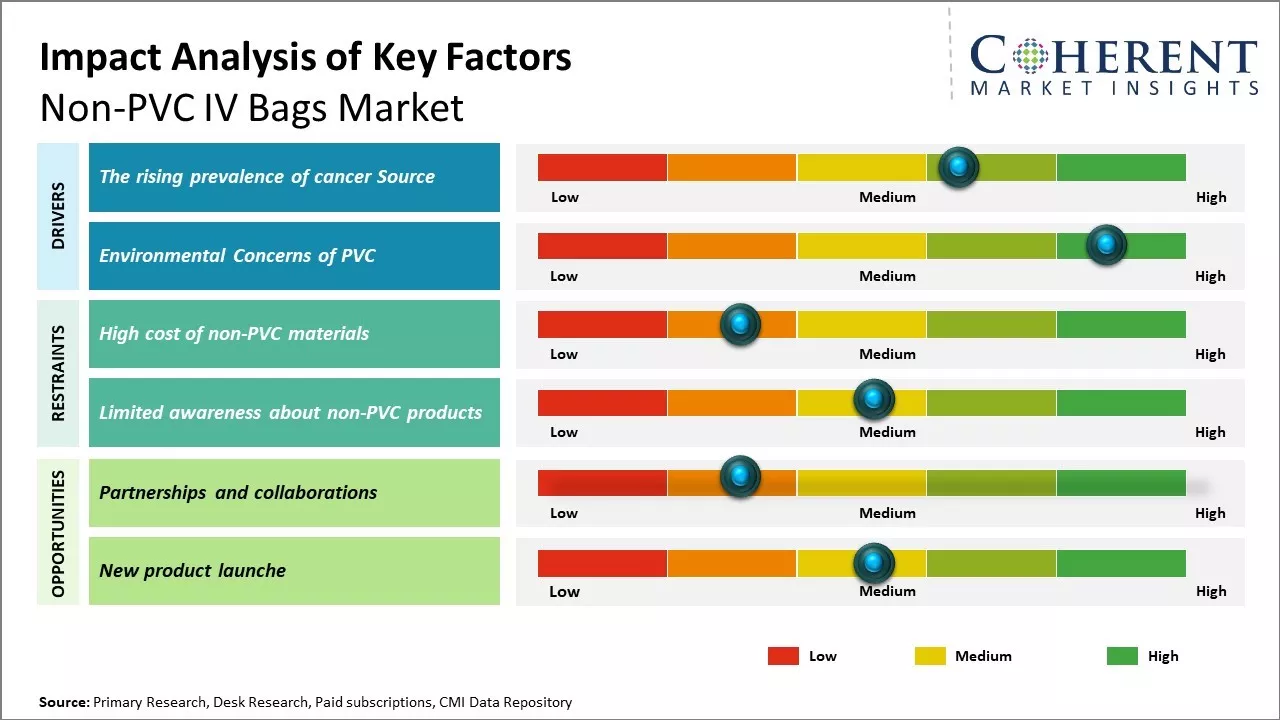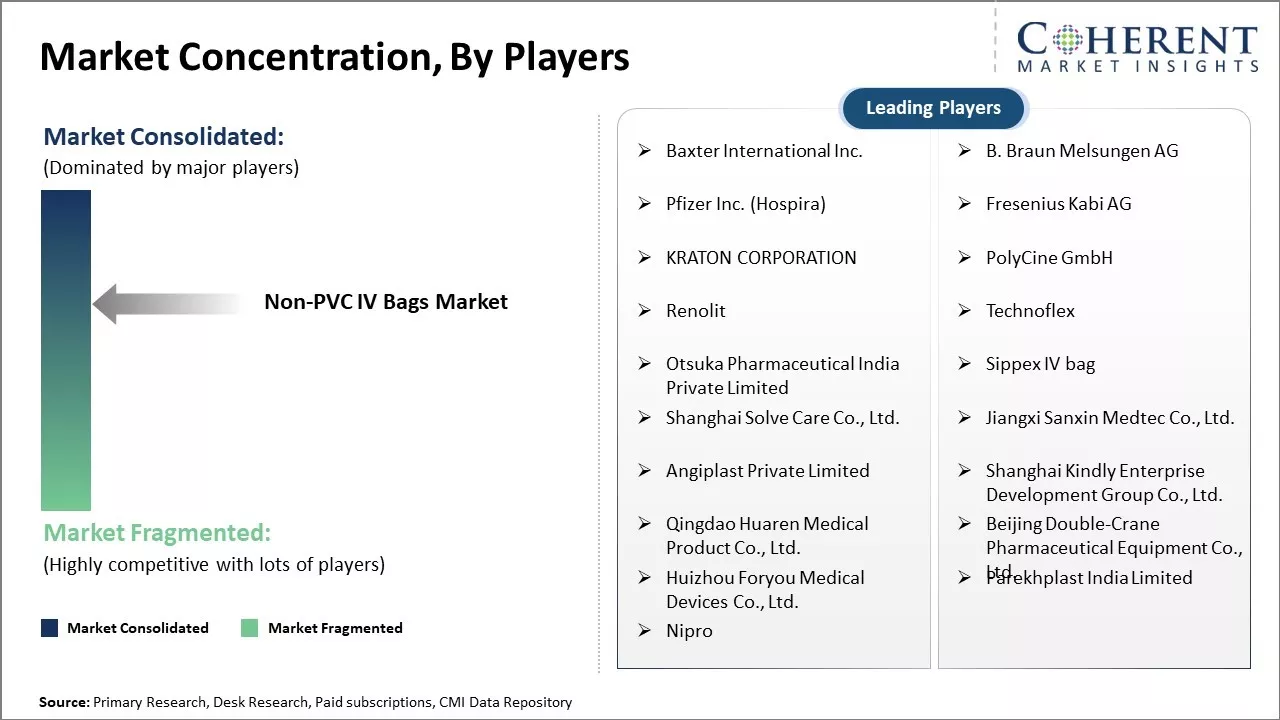The Global Non-PVC IV Bags Market is estimated to be valued at USD 2.44 Bn in 2025 and is expected to reach USD 4.96 Bn by 2032, exhibiting a compound annual growth rate (CAGR) of 10.7% from 2025 to 2032.

To learn more about this report, Request sample copy
The growth of the global non-PVC IV bags market is attributed to increasing awareness regarding benefits of non-PVC IV bags among healthcare facilities. Non-PVC IV bags reduce exposure to toxic plasticizers like DEHP and support better clinical outcomes. They are latex-free and DEHP-free, making them safer for patients including newborns, pregnant women, and persons undergoing long-term infusion therapy. Market players are investing in enhancing production capabilities of non-PVC materials like polypropylene and copper to meet the growing demand. Adoption of non-PVC IV bags is expected to further propel supported by regulatory guidelines promoting use of safer medical devices.
The Rising Prevalence of Cancer Source
The rising burden of cancer cases across the globe is a key factor driving the growth of the non-PVC IV bags market. Cancer being one of the leading causes of mortality worldwide has increased the demand for safer and better IV solutions for chemotherapy and other cancer treatments. Traditional PVC based IV bags can potentially leach toxic plasticizers like DEHP (diethylhexyl phthalate) into the fluids being administered to cancer patients. Such plasticizers have been found to act as endocrine disruptors and pose health risks especially to immunocompromised cancer patients. There is evidence that prolonged exposure to DEHP during chemotherapy can influence treatment outcomes negatively. This has increased awareness among healthcare professionals about the need for safer alternatives to PVC.
Non-PVC IV bags made of materials like polyethylene, polypropylene, and EVA are free from plasticizers and considered safer for cancer patients. They prevent potential toxic leaching and offer effective fluid administration. With rising cancer burden expected to continue in the coming years, the need for safer IV technologies throughout diagnosis, treatment and survivorship care is growing. For Instance, according to the January 2022 update by Breastcancer.org, around 287,850 new cases of invasive breast cancer are projected in the U.S., compared to 276,480 in 2020. India reported 18.3% of new cancer cases in 2020, with cervical cancer comprising 9.4% of all cases. Brazil recorded 300,114 new male cancer cases in 2020, with 97,278 cases being prostate cancer. Additionally, 292,098 new female cancer cases were reported in Brazil in 2020. This surge in cancer cases is expected to drive the demand for PVC-free IV bags due to the nutritional needs arising from cancer treatments, fostering market growth.

To learn more about this report, Request sample copy
Environmental Concerns of PVC
The use of PVC in IV bags has raised significant concerns regarding its negative impact on the environment. PVC is considered as one of the most environmentally challenging plastics due to the chemicals required in its production and processing. It utilizes large amounts of chlorine in its manufacturing which leads to the release of dioxins - a group of toxic compounds. Dioxins are considered as persistent organic pollutants which can remain in the environment for very long periods. They are transferred between air, water and land and thus can travel long distances. Numerous studies have shown they can bioaccumulate in humans and wildlife. Due to this, they have been linked to various diseases and developmental and reproductive disorders in humans as well as wildlife. The disposal of PVC medical waste is also problematic. As PVC items do not degrade naturally, most of the used PVC items including IV bags ultimately end up in landfills. In landfills, the chlorine present in PVC can leach out into the soil and pollute the groundwater. Growing eco-consciousness among patients, healthcare professionals as well as stakeholders have created demand for safer alternatives to PVC that are free from such toxic elements. Many views non-PVC materials as a more sustainable option that can address both environmental and health risks associated with traditional PVC-based products.
Joining thousands of companies around the world committed to making the Excellent Business Solutions.
View All Our Clients